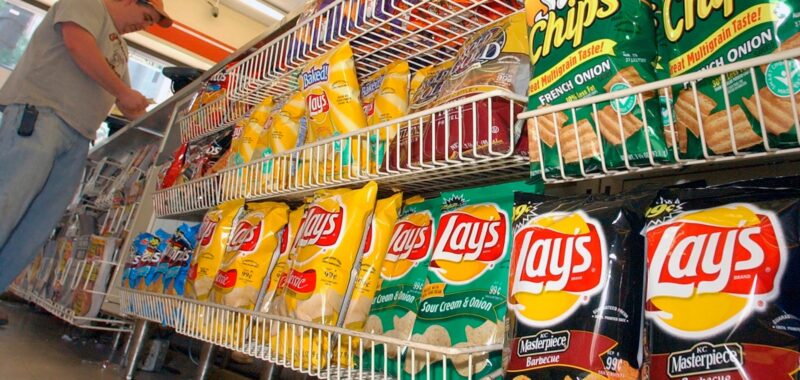Whether they know it or not, most Americans don’t go a day — or often a single meal — without eating ultraprocessed foods.
From sugary cereals at breakfast to frozen pizzas at dinner, plus in-between snacks of potato chips, sodas and ice cream, ultraprocessed foods make up about 60% of the U.S. diet. For kids and teens, it’s even higher – about two-thirds of what they eat.
That’s concerning because ultraprocessed foods have been linked to a host of negative health effects, from obesity and diabetes to heart disease, depression, dementia and more. One recent study suggested that eating these foods may raise the risk of early death.
Nutrition science is tricky, though, and most research so far has found connections, not proof, regarding the health consequences of these foods.
Food manufacturers argue that processing boosts food safety and supplies and offers a cheap, convenient way to provide a diverse and nutritious diet.
Even if the science were clear, it’s hard to know what practical advice to give when ultraprocessed foods account for what one study estimates is 73% of the U.S. food supply.
The Associated Press asked several nutrition experts and here’s what they said:
Most foods are processed, whether it’s by freezing, grinding, fermentation, pasteurization or other means. In 2009, Brazilian epidemiologist Carlos Monteiro and colleagues first proposed a system that classifies foods according to the amount of processing they undergo, not by nutrient content.
At the top of the four-tier scale are foods created through industrial processes and with ingredients such as additives, colors and preservatives that you couldn’t duplicate in a home kitchen, said Kevin Hall, a researcher who focuses on metabolism and diet at the National Institutes of Health.
“These are most, but not all, of the packaged foods you see,” Hall said.
Such foods are often made to be both cheap and irresistibly delicious, said Dr. Neena Prasad, director of the Bloomberg Philanthropies’ Food Policy Program.
“They have just the right combination of sugar, salt and fat and you just can’t stop eating them,” Prasad said
However, the level of processing alone doesn’t determine whether a food is unhealthy or not, Hall noted. Whole-grain bread, yogurt, tofu and infant formula are all highly processed, for instance, but they’re also nutritious.
Here’s the tricky part. Many studies suggest that diets high in such foods are linked to negative health outcomes. But these kinds of studies can’t say whether the foods are the cause of the negative effects — or whether there’s something else about the people who eat these foods that might be responsible.
At the same time, ultraprocessed foods, as a group, tend to have higher amounts of sodium, saturated fat and sugar, and tend to be lower in fiber and protein. It’s not clear whether it’s just these nutrients that are driving the effects.
Hall and his colleagues were the first to conduct a small but influential experiment that directly compared the results of eating similar diets made of ultraprocessed versus unprocessed foods.
Published in 2019, the research included 20 adults who went to live at an NIH center for a month. They received diets of ultraprocessed and unprocessed foods matched for calories, sugar, fat, fiber and macronutrients for two weeks each and were told to eat as much as they liked.
When participants ate the diet of ultraprocessed foods, they consumed about 500 calories per day more than when they ate unprocessed foods, researchers found — and they gained an average of about 2 pounds (1 kilogram) during the study period. When they ate only unprocessed foods for the same amount of time, they lost about 2 pounds (1 kilogram).
Hall is conducting a more detailed study now, but the process is slow and costly and results aren’t expected until late next year. He and others argue that such definitive research is needed to determine exactly how ultraprocessed foods affect consumption.
“It’s better to understand the mechanisms by which they drive the deleterious health consequences, if they’re driving them,” he said.
Some advocates, like Prasad, argue that the large body of research linking ultraprocessed foods to poor health should be more than enough to spur government and industry to change policies. She calls for actions such as increased taxes on sugary drinks, stricter sodium restrictions for manufacturers and cracking down on marketing of such foods to children, the same way tobacco marketing is curtailed.
“Do we want to risk our kids getting sicker while we wait for this perfect evidence to emerge?” Prasad said. Earlier this year, FDA Commissioner Robert Califf broached the subject, telling a conference of food policy experts that ultraprocessed foods are “one of the most complex things I’ve ever dealt with.”
But, he concluded, “We’ve got to have the scientific basis and then we’ve got to follow through.”
In countries like the U.S., it’s hard to avoid highly processed foods — and not clear which ones should be targeted, said Aviva Musicus, science director for the Center for Science in the Public Interest, which advocates for food policies.
“The range of ultraprocessed foods is just so wide,” she said.
Instead, it’s better to be mindful of the ingredients in foods. Check the labels and make choices that align with the current U.S. Dietary Guidelines, she suggested.
“We have really good evidence that added sugar is not great for us. We have evidence that high-sodium foods are not great for us,” she said. “We have great evidence that fruits and vegetables which are minimally processed are really good for us.”
It’s important not to vilify certain foods, she added. Many consumers don’t have the time or money to cook most meals from scratch.
“I think foods should be joyous and delicious and shouldn’t involve moral judgment,” Musicus said.
___
The Associated Press Health and Science Department receives support from the Howard Hughes Medical Institute’s Science and Educational Media Group. The AP is solely responsible for all content.

